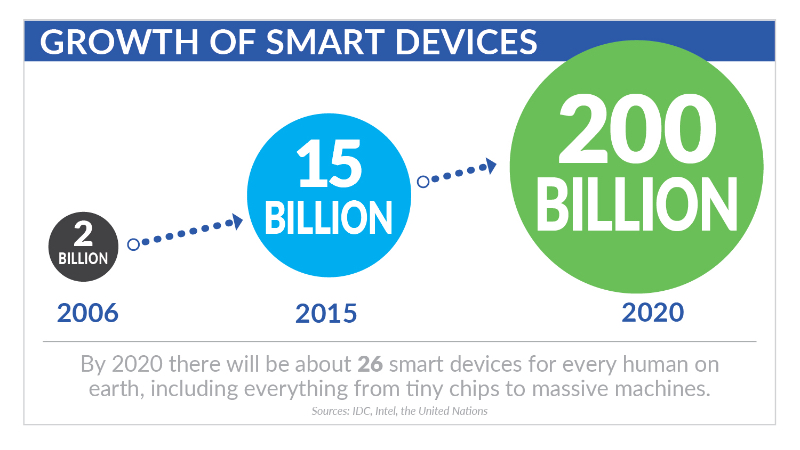Six essentials for successful sensor-informed applications

Phil Ressler of Sixgill LLC
We live in a new sensing world enabled by low-cost sensors. The explosion of data-emitting sensors is flooding organisations with potentially valuable new inputs. Sensor data, and the need to easily collect, understand and automate actions based on it, are rapidly propelling the next wave of IoT automation.
Innovative sensing applications will allow organisations to unite management of sensored assets—people, places and things—in ways never before possible. But for many organisations, these opportunities remain out of reach, says Phil Ressler, CEO, Sixgill, LLC.
Growing asset populations, exploding sensor and contextual data, poorly collected, and compromised governance, create obstacles to tapping the benefits of IoT. According to McKinsey, “companies currently underutilise most of the IoT data they collect.”
Here are six essentials for successful sensor data-informed IoT applications, that reverse that underutilisation.
Essential #1: Scalability
Ingesting small amounts of sensor data is relatively easy. But acquiring, organising, analysing and acting on aggregated sensor data for automated action is more challenging. For example, a commercial jet generates a petabyte of data per week; a smart factory can create a petabyte of data daily. Today, everything and every person is becoming a data centre.
As a result, developing effective IoT applications requires elastic scalability. In smart cities, for example, a diverse set of applications must be able to handle massive amounts of sensor data to power solutions for managing traffic or crowds, optimising parking, preventing crime, and others.
Essential #2: Flexibility
Support for cross-enterprise sensor data automation at any volume, velocity, and scale is another essential. One thing that will help is to deploy a single, configurable, data services backbone to support all sensor-informed applications. This should include an open architecture that’s able to ingest, aggregate, and process sensor data from any type of emitter and integrate functionality from external systems.
Flexibility is crucial for IoT applications across a variety of use cases such as smart construction or manufacturing. One system for cohesive assets orchestration ensures a construction company or manufacturer gains a holistic understanding of real-time and historical worksite activities to improve safety, productivity and compliance.
Essential #3: Data agnostic capabilities
In order to maximise the value of connected intelligence enabled by sensor data, organisations must be able to unify and manage data collection from numerous and disparate sensor sources. Applications that can handle only certain types of data are not as effective.
One use case where this is essential is IoT applications for smart buildings that arm organisations with a complete view of what’s going oninside structures – at any moment in time, or over any period of time.
Deploying this type of tech allows companies to collect and combine diverse sets of sensor data for such things as head count, people flow, room occupancy, lighting, and temperature, and take appropriate actions to improve productivity and lower costs.

Essential #4: Edge computing
In order to optimise IoT applications, companies should leverage “edge” computing to speed response times by lowering latency, minimising costly data transfer to the cloud, and keeping things humming even during connectivity interruptions.
Applications designed to process and respond to sensor data at the edge provide cost-effective data filtering, speed analysis and improve decisions. By implementing machine learning on the edge, organisations can employ new ways to programmatically learn, understand, predict, and act on real-time data, including frame-sequenced video data transformed into actionable information.
Edge opens up numerous additional IoT use cases that require low latency such as certain industrial automation applications utilising real-time data from cameras, audio, autonomous equipment, and a variety of intelligent logistics systems.
Essential #5: Extensibility
Platform extensibility to adapt to specific industry requirements is another essential. Use-case-specific data intersections and exception events should be user definable. Rules for automated response to identified events must be configurable to any complexity.
Extensibility will include fully documented APIs, support for native and common-skillset Javascript-authored plugins, and open I/O back-end services. Easy data and system interfaces to enterprise internal systems are a must, along with integration with third-party services, existing tools and private big data networks.
Essential #6: Create a single source of sensor data truth
To avoid the pitfalls of stitching together a patchwork of siloed data services to discrete sensing applications, organisations with successful IoT initiatives are deploying multiple applications from common-rail data foundations.
Unified systems avoid the dangers of solutions able to handle only a narrow range of emitters, and provide a simpler, more flexible approach that allows developers to create sensor-informed applications of nearly infinite variety on a common foundation for auditability, accountability and holistic analysis.
The ability to capitalise on the era of sensor-driven IoT is greatly enhanced for organisations that use a universal data automation service to automate IoT data and develop successful sensor-informed applications.
The author of this blog is Phil Ressler, CEO, Sixgill LLC
Comment on this article below or via Twitter @IoTGN
